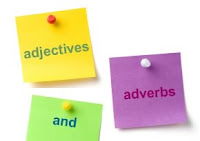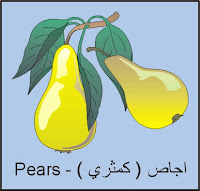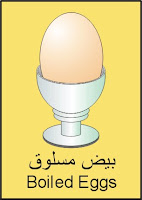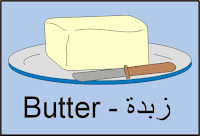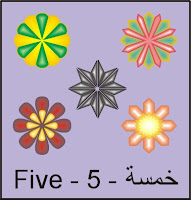Friday, July 30, 2010
Thursday, July 29, 2010
77 Tips To A Better English Using the Internet
 |
Spend Time Learning Not Searching!
77 Tips to a Better English
Using the Internet
Go Where Top Learners Go and Get Fast Results Too
A Guide for Second Language Learners
NEW November 2009 Edition
Click Here!
-Are you a non-native speaker of English who is looking for new effective ways of bettering your English?
-Have you spent a lot of money attending English classes that brought next to no results?
-Have you tried using language-learning softwares that you soon gave up after completing only the first few lessons?
-Would you like to make yours all the language-learning treasures the Internet has to offer but do not know how?
-Are you tired of wasting money buying expensive learning material that does not live up to your expectations?
-Would you like to learn English at your own pace in the comfort of your home and only focus on what you really need to improve?
-Do you want to learn the language strategies used by the most successful language learners?
-Would you like to communicate with native speakers of English free of charge via video messaging, online and written chats, and blogging?
If you have answered "yes" to any of the above questions
Click Here!
77 Tips to a Better English Using the Internet is a
-one-of-a-kind ebook that will help you take advantage of the many benefits that mastering English can bring to your life.
-Save precious time and gain immediate access only to the best English-learning resources online. These are the resources used by the top language learners worldwide.
-It will teach you 77 ways to learn English on your own while tapping into the multimedia power of the Internet.
-The 77 tips and hundreds of top resources it leads to were carefully chosen by two ESL teachers with over 17 years of experience while keeping your best interest in mind.
-These resources were selected on the basis of their relevance for language learners like you and they can be accessed from any computer in the world which is connected to the Internet
Give yourself the gift of English.
-Experience a new language and culture for travel, work, and personal enrichment
-Take control of your own learning
-Better your English quickly and efficiently
-Overcome your language learning obstacles
-Save time, save money and enjoy learning English like never before
-Avoid costly shipping charges
-Do not get left behind, join the thousands of people who are improving their English by tapping into the power of the Internet and getting amazing results
Learn to Speak English Fluently
"Take your communcation skill to another level. Don't let English speaking block your potential. Do you want to speak English using a simple method?"
Click Here!
Is English your second language?
If you said “Yes!”, do you want to learn how to talk fluently? Then I have something that will help you to improve your speaking ability.Click Here!
•Are you new to English speaking country?
•Are you struggling to speak in English?
•Are you having difficulty talking to someone in public places?
•Are you embarrassed when you can’t say something in English?
•Are you having difficulty expressing your ideas?
Click Here!
•Do you think that your full potential is not been shown to the public due to the language barrier?
•Do you want to express your ideas and opinion to the people who you deal with?
•Do you want to learn how to talk to people when you really need help
The American Accent Short Course
Imagine what you could do if you spoke clear, confident English!
- Get a better job
- Receive that promotion you deserve
- Talk to customers, clients, and co-workers with ease
- Increase your income
- Improve your social relationships
The new American Accent Short Course will teach you...
- The rules of the American accent. This is the stuff you didn't learn in your ESL class- even the average American doesn't realize he is doing this!
- How to link words and sounds together so they sound smooth and natural, not stiff and choppy.
- Which words should be stressed, which words should NOT be stressed, and why.
- Basic patterns of word intonation. Once you get this down, you can start to recognize them in everything around you.
- The absolutely, without a doubt, most common sound in English. And if you didn't learn English from childhood, you probably aren't saying it right!
- How to recognize and pronounce the reduced words of English. This will make a HUGE difference in your speaking
- Get a better job
- Receive that promotion you deserve
- Talk to customers, clients, and co-workers with ease
- Increase your income
- Improve your social relationships
The new American Accent Short Course will teach you...
- The rules of the American accent. This is the stuff you didn't learn in your ESL class- even the average American doesn't realize he is doing this!
- How to link words and sounds together so they sound smooth and natural, not stiff and choppy.
- Which words should be stressed, which words should NOT be stressed, and why.
- Basic patterns of word intonation. Once you get this down, you can start to recognize them in everything around you.
- The absolutely, without a doubt, most common sound in English. And if you didn't learn English from childhood, you probably aren't saying it right!
- How to recognize and pronounce the reduced words of English. This will make a HUGE difference in your speaking
This course is perfect for:
-business people
-medical personnel
-scientists
-educators
-college students
-real estate agents
-public servants
-engineers
-technicians
-anyone who communicates with native English speakers
It is also excellent for anyone wanting to speak and/or understand the American accent.
Wednesday, July 28, 2010
Object Pronouns
Remember, a pronoun is used in place of a noun. Subject pronouns come in front of verbs, and object pronouns follow them:
me us
you you
him, her, it them
EXAMPLES
–We see our friends.
–>We see them. (them takes the place of our friends)
–Call the waiter.
–>Call him. (i.e., the waiter)
–They like coffee.
–>They like it. (i.e., coffee)
Placement of Object Pronouns
When there is a sentence with more than one object pronoun, the rule is as follows:
1. PLACE THE DIRECT OBJECT PRONOUN DIRECTLY AFTER THE VERB
2. ANY INDIRECT OBJECT PRONOUN WILL COME LAST.
EXAMPLES
–The lawyer gives you the envelope.
–>He gives it to you.
–They will send me some letters.
–>They'll send them to me.
–He's explaining the will to us.
–>He's explaining it to us.
Note that when you use a direct object pronoun, it comes earlier in the sentence than its noun equivalent:
–I give you a visa.
–>I give it to you.
The example below points to a problem with object word order in English. When a noun is the direct object, it normally comes last in the sentence (I wrote them a check.). When a pronoun is the direct object, the indirect object moves to the end of the sentence, and is preceded by to:
–She's leaving you her estate.
–>She's leaving it to you.
me us
you you
him, her, it them
EXAMPLES
–We see our friends.
–>We see them. (them takes the place of our friends)
–Call the waiter.
–>Call him. (i.e., the waiter)
–They like coffee.
–>They like it. (i.e., coffee)
Placement of Object Pronouns
When there is a sentence with more than one object pronoun, the rule is as follows:
1. PLACE THE DIRECT OBJECT PRONOUN DIRECTLY AFTER THE VERB
2. ANY INDIRECT OBJECT PRONOUN WILL COME LAST.
EXAMPLES
–The lawyer gives you the envelope.
–>He gives it to you.
–They will send me some letters.
–>They'll send them to me.
–He's explaining the will to us.
–>He's explaining it to us.
Note that when you use a direct object pronoun, it comes earlier in the sentence than its noun equivalent:
–I give you a visa.
–>I give it to you.
The example below points to a problem with object word order in English. When a noun is the direct object, it normally comes last in the sentence (I wrote them a check.). When a pronoun is the direct object, the indirect object moves to the end of the sentence, and is preceded by to:
–She's leaving you her estate.
–>She's leaving it to you.
Reflexive Pronouns
The following are reflexive pronouns:
myself ourselves
yourself yourselves
himself, herself, itself themselves
A reflexive pronoun usually refers to the subject of a sentence:
–We looked at ourselves in the mirror.
(We and ourselves are the same persons.)
Sometimes reflexive pronouns are used for emphasis:
–I washed my clothes myself.
this, that & Pronouns
Demonstrative Adjectives and Pronouns
To differentiate between things in English, use either:
this
that
these
those
Any of these demonstratives can be used with a noun or by itself. This (singular) and these (plural) refer to something or someone close at hand. That (singular) and those (plural) refer to something or someone a bit farther away.
EXAMPLES:
–Do you want this box or that box?
–I'd like some of that popcorn.
–Do you want these or those?
–This apartment is nicer than that one.
To differentiate between things in English, use either:
this
that
these
those
Any of these demonstratives can be used with a noun or by itself. This (singular) and these (plural) refer to something or someone close at hand. That (singular) and those (plural) refer to something or someone a bit farther away.
EXAMPLES:
–Do you want this box or that box?
–I'd like some of that popcorn.
–Do you want these or those?
–This apartment is nicer than that one.
Using Whose
Whose is used to show possession. It has the same meaning as other possessive adjectives such as his, hers, its, their, etc.
–There's the man whose house we bought.
–I have a book whose story is fascinating.
Whose modifies people but can also be used with things.
You should learn how to combine short sentences using whose:
–The woman is a talented artist. I saw her paintings.
–The woman whose paintings I saw is a talented artist.
–There's the man whose house we bought.
–I have a book whose story is fascinating.
Whose modifies people but can also be used with things.
You should learn how to combine short sentences using whose:
–The woman is a talented artist. I saw her paintings.
–The woman whose paintings I saw is a talented artist.
Who, Which & That
The Relative Pronouns Who/Which/That
Who, which and that are relative pronouns. They are usually used in dependent clauses introduced by a main clause:
–I tipped the waiter who (that) served us.
–We thanked the people who (that) helped us.
Note that in the above two examples who and that are substituted for one another. Even though who is more grammatically correct than that in reference to a person or persons, that is heard often in speech.
Who is used only for people. That can be used to refer to a person or thing. Which is used only for things:
–The car, which we rented, doesn't work.
Who, which and that are relative pronouns. They are usually used in dependent clauses introduced by a main clause:
–I tipped the waiter who (that) served us.
–We thanked the people who (that) helped us.
Note that in the above two examples who and that are substituted for one another. Even though who is more grammatically correct than that in reference to a person or persons, that is heard often in speech.
Who is used only for people. That can be used to refer to a person or thing. Which is used only for things:
–The car, which we rented, doesn't work.
Whom, Which & That
The Relative Pronouns Whom/Which/That
Follow the same rules for using who(m), which, and that, as you do with other relative pronouns. The only difference is that now these pronouns are functioning as objects:
–The movie that we saw last night was terrible.
–The movie, which we saw last night, was terrible.
For people, you will use either who or whom. Who is usually used instead of whom in colloquial speech, even though it is technically incorrect:
–The person who they saw was sick. (informal)
–The person whom they saw was sick. (formal)
–There's the driver who the police arrested. (informal)
–There's the driver whom the police arrested. (formal)
Follow the same rules for using who(m), which, and that, as you do with other relative pronouns. The only difference is that now these pronouns are functioning as objects:
–The movie that we saw last night was terrible.
–The movie, which we saw last night, was terrible.
For people, you will use either who or whom. Who is usually used instead of whom in colloquial speech, even though it is technically incorrect:
–The person who they saw was sick. (informal)
–The person whom they saw was sick. (formal)
–There's the driver who the police arrested. (informal)
–There's the driver whom the police arrested. (formal)
Prepositions
Here are some common English prepositions:
about into
above like
across near
after of
along off
among on
around out
before over
behind since
below through
beneath throughout
beside till
between to
beyond toward
by under
despite until
down up
during upon
for with
from within
in without
Prepositions are used in phrases and as parts of verbs.
about into
above like
across near
after of
along off
among on
around out
before over
behind since
below through
beneath throughout
beside till
between to
beyond toward
by under
despite until
down up
during upon
for with
from within
in without
Prepositions are used in phrases and as parts of verbs.
Possessive Adjectives
Here are the possessive adjectives in English:
1st person, singular—my
3rd person, singular—his, her, its
1st person, plural—our
2nd person, sing./pl.—your
3rd person, plural—their
In English, the gender and number of the possessor determines the form of the possessive adjective:
–I have a credit card. It's my credit card.
–She has some money. It's her money.
NOTE: Often the subject of the verb is not the person who owns the noun. Be careful about this. You must know the gender and number of the owner to be able to use possessive adjectives correctly:
–Are you buying his ticket or her ticket?
–I'm buying his ticket.
Expressing Opposition
Here are some ways to show opposition when the result is the opposite of what you might expect:
1. ADVERB CLAUSES
even though
although
though
–Even though it was hot, we wore our coats.
2. CONJUNCTIONS
but ... anyway
but ... still
yet ... still
–It was cold, but we still went swimming.
3. PREPOSITIONS
despite
in spite of
–They went skiing despite the warm temperatures.
Here are words that show direct opposition:
1. ADVERB CLAUSES
whereas
while
–Paul is tall, whereas Richard is short.
–While Sue is industrious, Marie is lazy.
2. CONJUNCTION
but
–The travel agent is tired, but she is still working.
3. TRANSITIONS
however
on the other hand
–Carole is beautiful; however, she doesn't dress very well.
Whereas and while are used to show direct opposition; it does not make any difference which idea comes first and which second; the same rule applies for but / however / on the other hand.
Negatives
The word not is used with do to make a verb negative, as in I don't have any money (don't = do not). No is used as an adjective in front of a noun, as in I have no money. Both of these examples are acceptable ways of expressing the idea that you do not have something.
Note these contracted negative forms with do:
I don't
you don't
he, she doesn't
they don't
we don't
Here are some affirmative words and their negative forms in English:
AFFIRMATIVES
someone, anybody
something, anything
still
ever
either... or
NEGATIVES
no one, nobody
nothing
no longer
never
neither... nor
Avoid using more than one negative in a clause:
–I don't have any money.
NOT: I don't have no money.
–They don't see anybody.
NOT: They don't see nobody.
–I didn't do anything.
NOT: I didn't do nothing.
Exclamations!
Most exclamations in English are preceded by what or how:
–What terrible weather!
–How awful!
What is used much more frequently than how in everyday language.
Exclamations can be as brief as one or two words (What a mess!) or as long as a sentence:
–What a way to end my vacation!
NOTE: Don't forget that what and how are most frequently used in questions:
–What did you say?
–How much does it cost?
–What terrible weather!
–How awful!
What is used much more frequently than how in everyday language.
Exclamations can be as brief as one or two words (What a mess!) or as long as a sentence:
–What a way to end my vacation!
NOTE: Don't forget that what and how are most frequently used in questions:
–What did you say?
–How much does it cost?
Contractions
You will want to learn how to use contractions as soon as possible. Contractions are used constantly in informal English. Examples of contracted subject/verb forms are:
TO BE
I am–>I'm
he is–>he's
we are–>we're
you are–>you're
they are–>they're
TO HAVE
I have–>I've
we have–>we've
you have–>you've
they have–>they've
Contractions are frequently used with compound forms of verbs, especially the progressive or continuous form of the present tense (I'm going. / We're leaving.) and the present perfect forms (I've received the letter. / They've already left.)
TO BE
I am–>I'm
he is–>he's
we are–>we're
you are–>you're
they are–>they're
TO HAVE
I have–>I've
we have–>we've
you have–>you've
they have–>they've
Contractions are frequently used with compound forms of verbs, especially the progressive or continuous form of the present tense (I'm going. / We're leaving.) and the present perfect forms (I've received the letter. / They've already left.)
Using Conjunctions
Here are some conjunctions that are frequently used in subordinate clauses:
TIME CAUSE & EFFECT
after because
before since
when now that
while as
as as/so long as
since inasmuch as
until so (that)
as soon as in order that
once
as/so long as
OPPOSITION CONDITION
even though if
although unless
though only if
whereas whether or not
while even if
providing (that)
provided (that)
incase (that)
in the event (that)
When a conjunction is used with a subordinate clause, the construction is called an adverbial clause.
Here are some adverbial clauses that relate to time:
–After we leave the bank, we'll spend the money.
–When they arrived, they sat down to dinner.
–We haven't seen her since she left.
And here are clauses that show cause and effect relationships:
–Since you didn't call, I made other plans.
–He went to bed, because he was tired.
Another way to show a cause and effect relationship is to use such... that and so... that:
–It was such a nice evening that they stayed up too late.
–The lemonade was so cold that she couldn't drink it.
TIME CAUSE & EFFECT
after because
before since
when now that
while as
as as/so long as
since inasmuch as
until so (that)
as soon as in order that
once
as/so long as
OPPOSITION CONDITION
even though if
although unless
though only if
whereas whether or not
while even if
providing (that)
provided (that)
incase (that)
in the event (that)
When a conjunction is used with a subordinate clause, the construction is called an adverbial clause.
Here are some adverbial clauses that relate to time:
–After we leave the bank, we'll spend the money.
–When they arrived, they sat down to dinner.
–We haven't seen her since she left.
And here are clauses that show cause and effect relationships:
–Since you didn't call, I made other plans.
–He went to bed, because he was tired.
Another way to show a cause and effect relationship is to use such... that and so... that:
–It was such a nice evening that they stayed up too late.
–The lemonade was so cold that she couldn't drink it.
Using Comparisons
There are two ways to make a comparison in English.
1.) Use more in front of the adjective.
–It's more exciting.
2.) Add -er to end of the adjective.
–A bus is cheaper than a taxi.
To complete a comparison, use than.
–I am older than my wife.
For most one-syllable adjectives, use -er: older, wiser, etc. For most two and three-syllable adjectives, use more: more recent. For two-syllable adjectives ending in -y, use -er. Note that the y is changed to i in words such as busy (busier) and pretty (prettier).
It is sometimes hard to decide whether to use more or -er in a comparison. In fact, there are many common adjectives that use either form (such as able, angry, cruel, friendly, polite, quiet, simple, etc.). Listening and practice with speaking the language will help you more than any number of rules. Finally, note the following irregular forms:
good–>better
little–>less
bad–>worse
far–>farther
Adverbs can also be used in comparisons. More is used with adverbs that end in -ly:
slowly–>more slowly
careful–>more carefully
Use -er with one-syllable adverbs: faster, harder, sooner, closer, etc.
Note these irregular forms:
well–>better
far–>farther
badly–>worse
1.) Use more in front of the adjective.
–It's more exciting.
2.) Add -er to end of the adjective.
–A bus is cheaper than a taxi.
To complete a comparison, use than.
–I am older than my wife.
For most one-syllable adjectives, use -er: older, wiser, etc. For most two and three-syllable adjectives, use more: more recent. For two-syllable adjectives ending in -y, use -er. Note that the y is changed to i in words such as busy (busier) and pretty (prettier).
It is sometimes hard to decide whether to use more or -er in a comparison. In fact, there are many common adjectives that use either form (such as able, angry, cruel, friendly, polite, quiet, simple, etc.). Listening and practice with speaking the language will help you more than any number of rules. Finally, note the following irregular forms:
good–>better
little–>less
bad–>worse
far–>farther
Adverbs can also be used in comparisons. More is used with adverbs that end in -ly:
slowly–>more slowly
careful–>more carefully
Use -er with one-syllable adverbs: faster, harder, sooner, closer, etc.
Note these irregular forms:
well–>better
far–>farther
badly–>worse
Imperatives
Imperatives (The Command Form)
It is simple to use the imperative or command form in English. When a command is directed at someone else, use the you form of the simple present tense:
–You take the elevator.
–>Take the elevator.
(Simply drop the subject you.)
If the command includes you and others, use the we form:
–We take our luggage.
–>Let's take the luggage.
(Drop the subject we and add let's [let us].)
It is simple to use the imperative or command form in English. When a command is directed at someone else, use the you form of the simple present tense:
–You take the elevator.
–>Take the elevator.
(Simply drop the subject you.)
If the command includes you and others, use the we form:
–We take our luggage.
–>Let's take the luggage.
(Drop the subject we and add let's [let us].)
Articles
Indefinite and Definite Articles
There is no need to worry about whether a noun is masculine, feminine, or neuter in English. Normally, a noun is preceded by a definite article (THE) or an indefinite article (A, AN) as follows:
DEFINITE ARTICLE
the tourist
the area
the card
the hotel
the restaurant
the people
the signs
INDEFINITE ARTICLE
a tourist
an area
a card
a hotel
a restaurant
some people
some signs
Note that definite articles refer to something specific, while indefinite articles refer to something non-specific. Use an in front of words beginning with vowels and some with plural nouns.
There is no need to worry about whether a noun is masculine, feminine, or neuter in English. Normally, a noun is preceded by a definite article (THE) or an indefinite article (A, AN) as follows:
DEFINITE ARTICLE
the tourist
the area
the card
the hotel
the restaurant
the people
the signs
INDEFINITE ARTICLE
a tourist
an area
a card
a hotel
a restaurant
some people
some signs
Note that definite articles refer to something specific, while indefinite articles refer to something non-specific. Use an in front of words beginning with vowels and some with plural nouns.
Using Some and Any
In English the words some and any are used before plural nouns: some money, some dollars, any change, etc.
However, it is often possible to leave out the word some in declarative sentences:
–We have (some) checks.
–Mr. Roberts gives them (some) money.
The word any is usually used in questions and negations to replace some:
–Do you have any change?
–Do you have some change?
–They don't have any friends.
However, it is often possible to leave out the word some in declarative sentences:
–We have (some) checks.
–Mr. Roberts gives them (some) money.
The word any is usually used in questions and negations to replace some:
–Do you have any change?
–Do you have some change?
–They don't have any friends.
Few and Little
Using A Few, Few, A Little, and Little
A few and few are used with plural count nouns:
–a few friends, few ideas, a few things to do, etc.
A little and little are used with noncount nouns:
–little money, a little rain, a little wind, etc.
NOTE: Few and little give a negative idea, conveying the notion that something is largely absent:
–They have very little money.
–We have few options remaining.
NOTE: A few and a little give a positive idea, indicating that something exists or is present:
–I have a little free time today.
–Do you have a few moments?
A few and few are used with plural count nouns:
–a few friends, few ideas, a few things to do, etc.
A little and little are used with noncount nouns:
–little money, a little rain, a little wind, etc.
NOTE: Few and little give a negative idea, conveying the notion that something is largely absent:
–They have very little money.
–We have few options remaining.
NOTE: A few and a little give a positive idea, indicating that something exists or is present:
–I have a little free time today.
–Do you have a few moments?
Adjectives and Adverbs
Placement of Adjectives and Adverbs
Adjectives and adverbs are invariable in English. Adjectives always come in front of the noun they modify. Adverbs usually come after the verb they modify.
ADJECTIVES
a good book
an excellent dinner
a fine wine
a charming person
a hot day
an unreasonable person
ADVERBS
–This newspaper is published frequently.
–The Immigration Agent is speaking quickly.
Adjectives and adverbs are invariable in English. Adjectives always come in front of the noun they modify. Adverbs usually come after the verb they modify.
ADJECTIVES
a good book
an excellent dinner
a fine wine
a charming person
a hot day
an unreasonable person
ADVERBS
–This newspaper is published frequently.
–The Immigration Agent is speaking quickly.
Passive Voice
In other sections, you have seen verbs used in the active voice. The passive voice is sometimes used in English as well. In the active voice, the subject performs the action on something else; in the passive voice, the action is performed on the subject.
ACTIVE
–The doctor wrote a prescription.
PASSIVE
–The prescription was written by the doctor.
NOTE: In the passive, the object of the active verb becomes the subject.
To make the passive, use the appropriate form of the verb to be + past participle. Only transitive verbs are used in the passive:
ACTIVE: Fred helps Jane.
PASSIVE: Jane is helped by Fred.
ACTIVE: He is helping her.
PASSIVE: She is being helped by him.
ACTIVE: He has helped her.
PASSIVE: She has been helped by him.
ACTIVE: He helped her.
PASSIVE: She was helped by him.
ACTIVE: He was helping her.
PASSIVE: She was being helped by him.
ACTIVE: He had helped her.
PASSIVE: She had been helped by him.
ACTIVE: He will help her.
PASSIVE: She will be helped by him.
ACTIVE: He is going to help her.
PASSIVE: She is going to be helped by him.
Usually the by phrase is omitted in a passive sentence. The passive is used mainly when it is not known or not important to know who was responsible for the action:
–The house was built in 1960.
(The by phrase is left out because it is understood that builders built the house).
ACTIVE
–The doctor wrote a prescription.
PASSIVE
–The prescription was written by the doctor.
NOTE: In the passive, the object of the active verb becomes the subject.
To make the passive, use the appropriate form of the verb to be + past participle. Only transitive verbs are used in the passive:
ACTIVE: Fred helps Jane.
PASSIVE: Jane is helped by Fred.
ACTIVE: He is helping her.
PASSIVE: She is being helped by him.
ACTIVE: He has helped her.
PASSIVE: She has been helped by him.
ACTIVE: He helped her.
PASSIVE: She was helped by him.
ACTIVE: He was helping her.
PASSIVE: She was being helped by him.
ACTIVE: He had helped her.
PASSIVE: She had been helped by him.
ACTIVE: He will help her.
PASSIVE: She will be helped by him.
ACTIVE: He is going to help her.
PASSIVE: She is going to be helped by him.
Usually the by phrase is omitted in a passive sentence. The passive is used mainly when it is not known or not important to know who was responsible for the action:
–The house was built in 1960.
(The by phrase is left out because it is understood that builders built the house).
PLURAL PRONOUNS
SUBJECT OBJECT POSSESSIVE ملكية
غير متبوعة باسم- متبوعة باسم We نحن us our Ours ملكنا
You - أنت أنتم you your Yours ملككم
Theyهم-هن them their Theirs ملكهم ملكهن
EXAMPLE
It bits them هو عضهم
We visit you. نحن نزوركم
You welcome us أنتم ترحبوا بنا
They read it. هم يقرءوه
These are our books.These’re ours.
These are your books.These’re yours.
These are there books. These’re theirs.
غير متبوعة باسم- متبوعة باسم We نحن us our Ours ملكنا
You - أنت أنتم you your Yours ملككم
Theyهم-هن them their Theirs ملكهم ملكهن
EXAMPLE
It bits them هو عضهم
We visit you. نحن نزوركم
You welcome us أنتم ترحبوا بنا
They read it. هم يقرءوه
These are our books.These’re ours.
These are your books.These’re yours.
These are there books. These’re theirs.
Tuesday, July 27, 2010
To Be
Here are the forms of the English verb "to be" in context:
I am American.
You are American, too. (use this form for singular and plural, formal and informal)
He is Italian.
She is French.
It is a rabbit.
We are American.
You are French. (use this form for singular and plural, formal and informal)
They are Austrian.
English speakers commonly use contracted forms of "to be:"
I am American. I’m American
You are American, too. You’re American, too.
He is Italian. He’s Italian.
She is French. She’s French.
It is a rabbit. It’s a rabbit.
We are American. We’re American.
You are French. You’re French.
They are Austrian. They’re Austrian.
Here’s a quick reference chart for the verb "to be:"
Singular Plural
I am we are
you are you are
he/she/it is they are
Subscribe to:
Posts (Atom)
-
Many times you will want to ask a question that elicits information, instead of a simple yes/no answer. Information questions will...
-
Blending communicative and interactive approaches with tried-and-true grammar teaching, Basic English Grammar, Third Edition, by Betty...










